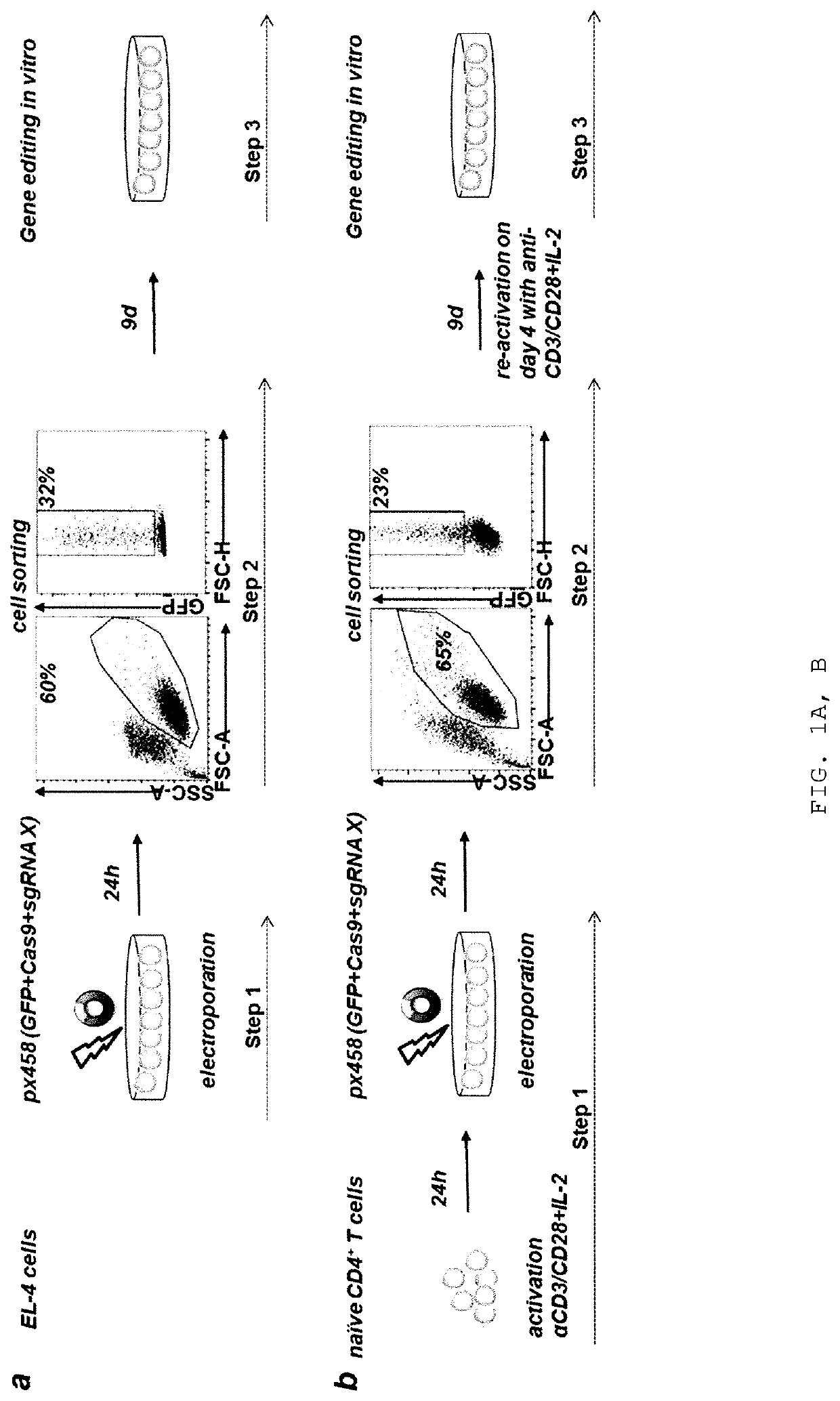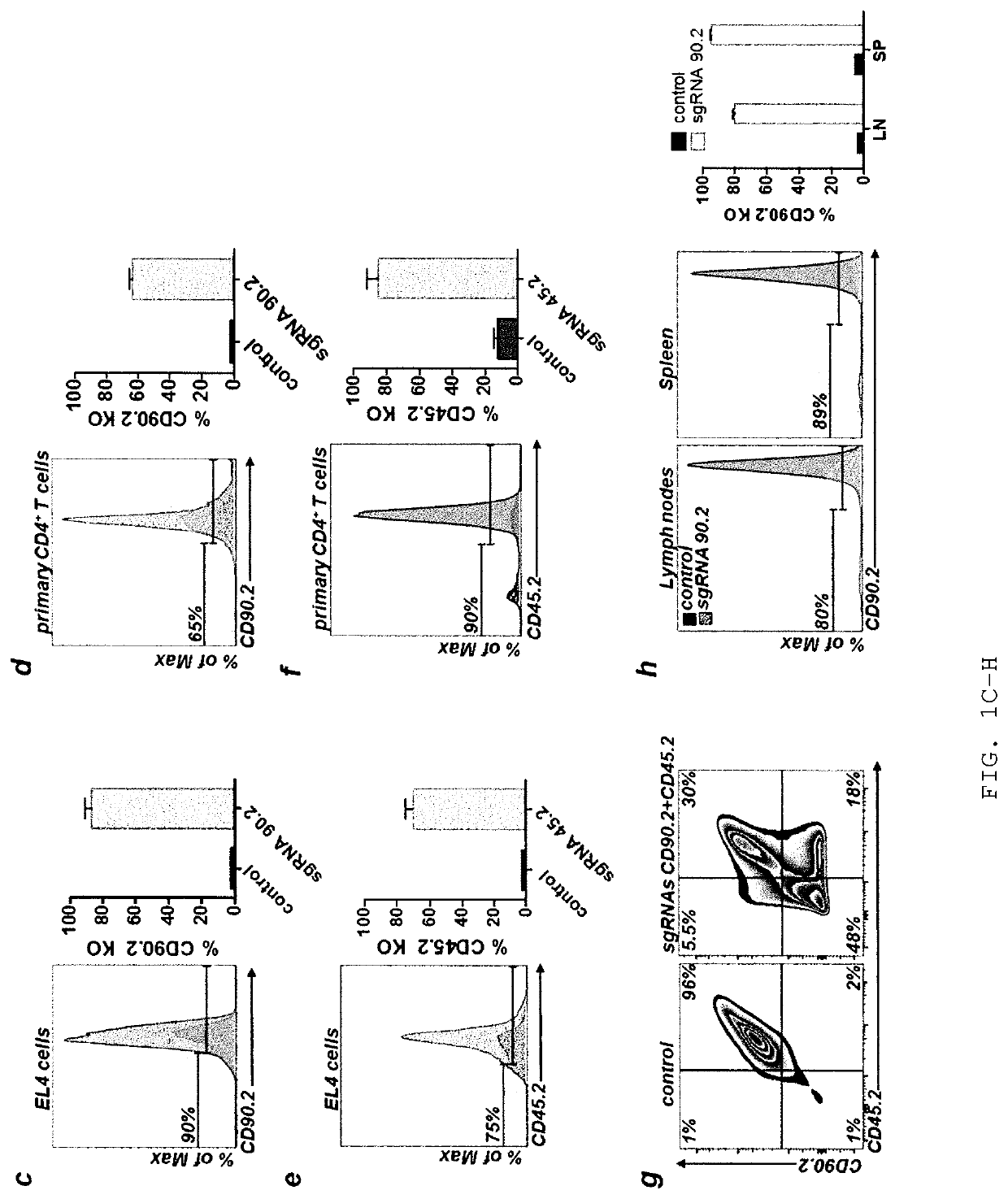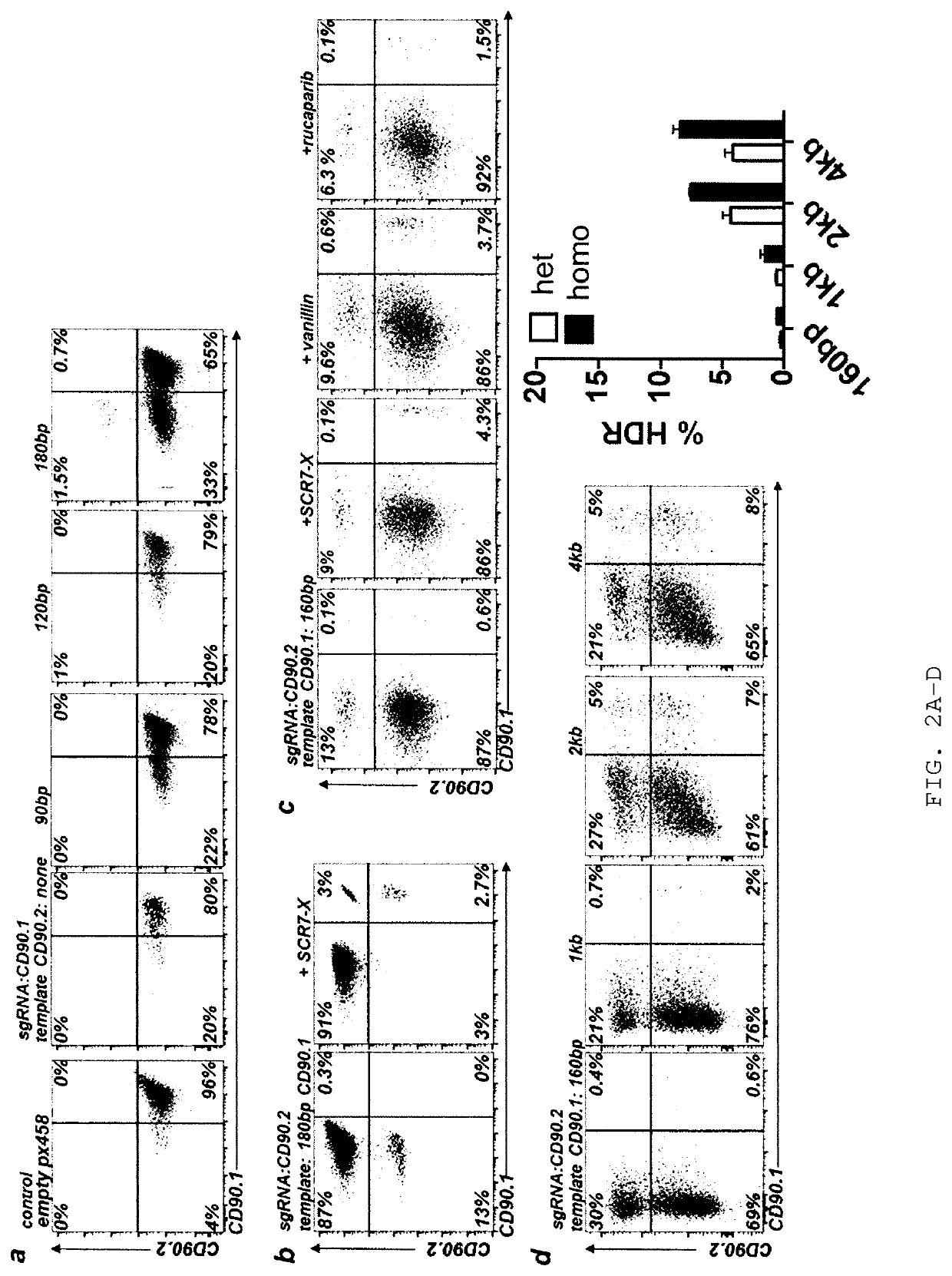Allele editing and applications thereof
a technology of alleles and editing sequences, applied in the field of allele editing, can solve the problems of bottlenecking the achievement of low hdr efficiency, unable to overcome the inherently stochastic nhej repair pathway used in the clinical use of inherently stochastic nhej repair pathways, and unable to overcome the low hdr efficiency
- Summary
- Abstract
- Description
- Claims
- Application Information
AI Technical Summary
Benefits of technology
Problems solved by technology
Method used
Image
Examples
Embodiment Construction
Efficient Plasmid-Based Gene Ablation in Primary T Cells
[0210]Previous reports successfully used chemically modified guide RNAs (Hendel et al., Nat Biotech 33, 985-989, 2015) or Cas9 / sgRNA ribonucleoprotein (RNP) complexes for CRISPR / Cas9-mediated genome editing in human T cells (Schumann, PNAS 112 10437-10442, 2015). DNA based approaches were reported to work poorly if at all. However, many plasmids are waiting to be used if efficient protocols were available (Addgene.org / crispr). In contrast, only very few genome editing nucleases are available as recombinant proteins. Therefore, the inventors aimed to develop a plasmid-based genome editing approach in primary T cells. Based on a successful T cell electroporation protocol (Steiner et al., Immunity 35, 169-181, 2011), the inventors optimized experimental conditions for EL-4 and primary murine CD4+ T cells using a GFP expression plasmid (FIGS. 1A and 1B). The inventors quantified the efficiency of gene editing in single cells for ge...
PUM
| Property | Measurement | Unit |
|---|---|---|
| concentrations | aaaaa | aaaaa |
| concentrations | aaaaa | aaaaa |
| concentrations | aaaaa | aaaaa |
Abstract
Description
Claims
Application Information
 Login to View More
Login to View More - R&D
- Intellectual Property
- Life Sciences
- Materials
- Tech Scout
- Unparalleled Data Quality
- Higher Quality Content
- 60% Fewer Hallucinations
Browse by: Latest US Patents, China's latest patents, Technical Efficacy Thesaurus, Application Domain, Technology Topic, Popular Technical Reports.
© 2025 PatSnap. All rights reserved.Legal|Privacy policy|Modern Slavery Act Transparency Statement|Sitemap|About US| Contact US: help@patsnap.com



